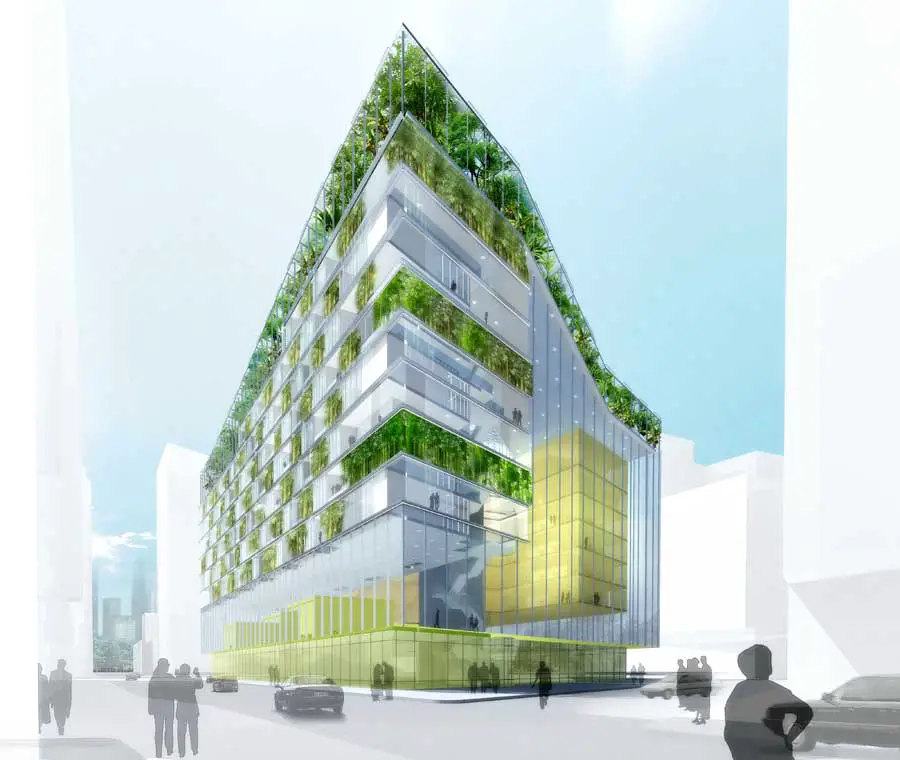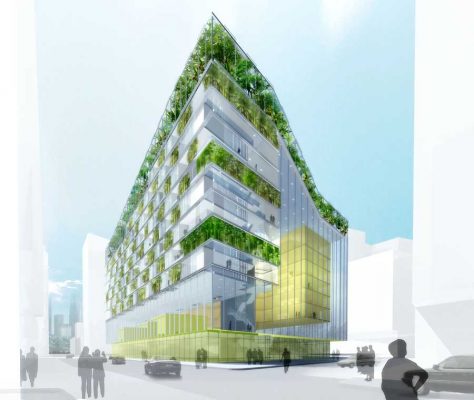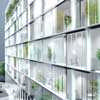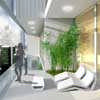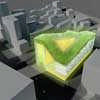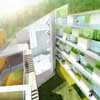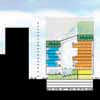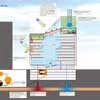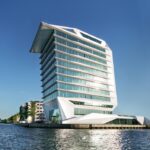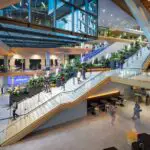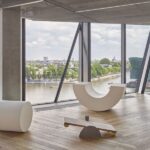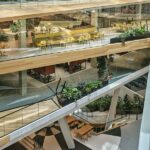The Zuidkas Amsterdam office building, Dutch commercial property design images, Holland
The Zuidkas Amsterdam : Office Building Holland
Study for Government Buildings Agency in The Netherlands
post updated 23 December 2024
Zuidkas office building – study, Amsterdam, Holland
Architectenbureau Paul de Ruiter
27 May 2009
The Zuidkas – Amsterdam office building
The Zuidkas is a study carried out by Architectenbureau Paul de Ruiter and was commissioned by the Government Buildings Agency to us and four other firms. The assignment centres on an imaginary office building of over 11,000 m² on the Zuidas tangent in Amsterdam, which is intended to achieve as high a score as possible with regard to the fulfilment of environmental objectives.
THE ZUIDKAS AS A CASE STUDY
Working on the basis of our views on the material, we formulated nine sustainability aspects, from which the Zuidkas concept emerged almost as a natural conclusion (see previous page). Taking issues like CO2 reduction, energy savings and public health into account, we arrived at a functional mix in the building that is far from ordinary: homes, offices, a school, parking facilities, retail, restaurants, a park and a biogas electrical plant.
All of these functions can be connected by a glass envelope that accommodates a variety of ‘greenhouses’: CO2 greenhouses, hybrid greenhouses, a buffer zone and various atria. The objective was to make an intelligent autarchic building that allows for the exchange of energy and CO2 streams and the conversion of waste streams into heat and energy.
As well as minimising the building’s total emission levels, bringing back the building’s energy requirement to minimum levels, and above all creating an attractive, comfortable and healthy environment for people to live and work in. To develop the building as a miniature city, embedded in the proposed urban structure of the Zuidas. A sustainable Unité d’Habitation.
MIXED FUNCTIONS AS A SUSTAINABILITY STRATEGY
The merging and advantageous stacking of offices, homes, a school and retail facilities results in a compact model. By including functions with a low-rise typology like stores and greenhouses in the model, the design makes optimum use of the available land. And thanks to the concentration of activities, there is less traffic than would be the case with a building with separate functions.
This compact model also creates an opportunity to develop a more balanced response to the demand for energy over time. In residential units, the energy demand spikes in the mornings and evenings. In the case of offices, the energy demand reaches its highest point at the middle of the day. A building’s energy supply often does not work efficiently, because capacity is regulated to meet the peak-hour demand any time of day, including off-peak hours.
THE GREENHOUSE PRINCIPLE
The design includes a glass shell that covers the configuration of the ground level and naves, creating a variety of climate buffers, that will work as an intermediate zone that naturally tempers the effects of the outside climate. The shell surrounding the building strongly reduces the surface area responsible for the loss of heat during the winter and cold during the summer. The buffer area facing south functions as a sun lounge for the homes.
Thanks to the buffer effect, the loss of heat in the winter is reduced. In the summer, the sun lounge cools the adjacent areas thanks to the stack effect. In this process, fresh air is sucked in and constantly circulated. It will be possible to open the exterior shell, to prevent the area behind the shell from becoming too hot.
ORIENTATION
Another reason to build the offices facing north is the extremely high production of internal heat by computers, lighting and appliances (and their users). This results in a fairly substantial cooling requirement in the summer period. By building the offices facing north, the heat of the sun in the summer has less of an impact on the building, with less energy required to cool the building as a result.
In homes, the production of internal heat is far lower, and the average temperature is often higher. By building the homes facing the south, and including a terrace, the design can actually make use of the heat of the sun, which in the winter makes a major contribution to the supply of heat.
A double-height ground level area accommodates the school and the retail functions. Situated on top of the ground level facilities, one finds a public space that serves as a schoolyard. One section of this area can be entered via the office nave, with access ensured via two core areas. The various meeting areas are located between these core areas on the atrium side. On top of these spaces, various work area balconies will be developed in the atrium.
The northern side of the building will primarily be occupied by a work area, with the ground plan offering possibilities to arrange space as required.
BIO-COGENERATION/GEOTHERMAL STORAGE SYSTEM/RAINWATER
Besides vegetable waste and biomass from the greenhouse, the building will also collect black water (toilet water) and lead it to the co-fermentation plant. In the co-fermentation plant, all biomass will be converted into biogas. This gas will serve as a sustainable fuel for the CHP power installation (bio-cogeneration). The heat that is released in this process will be used to heat tap water as well as the various building areas. Besides generating heat, the CHP power installation will also produce high-quality energy in the form of electricity.
The heat surplus in the summer and the cold surplus in the winter will be stored via a geothermal storage system in thermal masses below the surface. The stored heat will be used in the winter and the stored cold will be used during the summer. The supply and consumption of heat and cold will become even more interesting as an option if the whole surrounding area is involved in the geothermal storage system.
Rainwater will be collected on the roof. The quantity collected – some 4,130 m³ per year – is more than sufficient to supply the greenhouses and flush the toilets. The remainder of the collected water can be used for the washers and various household activities.
The Zuidkas Amsterdam – Building Information
Client: Government Buildings Agency
Design: Apr-Jun 2008
Architect: Architectenbureau Paul de Ruiter
Design team: Paul de Ruiter, Chris Collaris, Haik Hanemaayer, Noud Paes, Marieke Sijm
Advisor: Arup Amsterdam: Jaap Wiedenhoff, Christa de Vaan
The Zuidkas images / information from Architectenbureau Paul de Ruiter 200209
Architectenbureau Paul de Ruiter
Location: De Zuidkas, Amsterdam, The Netherlands, western Europe
Architecture in Amsterdam
Contemporary Architecture in Amsterdam
Amsterdam Architecture – contemporary building information
photograph © Adrian Welch
Amsterdam Buildings – historic building information
photo © Adrian Welch
Dutch Architectural Designs
Major New Dutch Buildings
Netherlands Architecture Designs – chronological list
Buildings in the area
Comments / photos for The Zuidkas Amsterdam – Holland Architecture design by Architectenbureau Paul de Ruiter page welcome.

